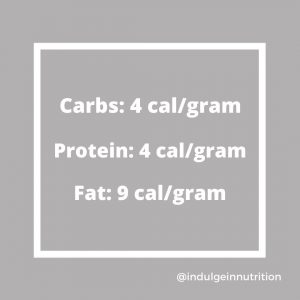
Red, White, and Blue Fruit Skewers
June 29, 2020
Pan-Grilled Chicken and Squash Nuggets
July 13, 2020
Weight loss and weight management are umbrellas for many methods; every year, more and more methods pile up, and it can be hard to keep track! Weight loss/management is not a one-size-fits-all journey. Your story may look very different than the person next to you. Whatever your journey might look like, creating a healthy lifestyle is a beautiful thing and something to be celebrated! Today, I want to talk about a method that has popped up in recent years – this method is counting macros. “Macronutrient counting” has gained recent popularity in the nutrition community. Many men and women have adopted it as a part of their lifestyle. A huge benefit of this, as opposed to calorie counting, is that it helps ensure you are getting the proper amount of essential nutrients you need. Here are a few questions you might have that I hope to answer for you:
What are macronutrients?
Macronutrients (or “macros”) are what make up our caloric intake. There are other micronutrients like vitamins and minerals present in most foods, but the main building blocks are macros. For instance, think of a Chick-Fil-A sandwich (yum!). It typically has 171 calories from fat, 160 calories from carbs, and 112 calories from protein for a total of 440 calories. Macros are the sources that provide us energy from our food.
What are the macronutrients?
Protein, carbohydrates, and fat
How many calories do macronutrients have?

I like numbers. Show me how to calculate, Melissa!
Remember my Chick-Fil-A sandwich example? Let me show you how I calculated it:
- Carbs are 4 calories per gram and there are 40 g carbs, so we can multiply 4 by 40 and get 160 calories
- Protein has 4 calories per gram and there are 28 g protein, so we can multiply 4 by 28 and get 112 calories
- Fat has 9 calories per gram are there are 19 g fat, so we can multiply 9 by 19 and get 171 calories
Whew! The process of counting macronutrients takes some work. It’s not something I would expect you to do for all of your food. However, if you have a simple elementary-school knowledge of mathematics and a nutrition label, this is something you could do.
How do I know how many I need?
There are ways to figure out your protein/fat/carbs needs by hand, but the easiest way is to use a handy dandy macro calculator! This will help you figure out the number of carbs, fat, and protein you need every day to reach your goals.
If you’re not even sure how many calories you need, think about what your goals are. What season are you in? Are you trying to shed weight or maintain your current weight?
A total energy expenditure calculator can help you figure out how many calories you’re going to need every day to meet your goals!
Just like any other method of weight loss/management, counting macros is not for everyone! It’s not something that I typically recommend, because I believe it can be complicated and not sustainable. I’m here to make eating simpler and less stressful, but whatever works best for you can only be decided by you. This is the beauty of being a unique human being!



